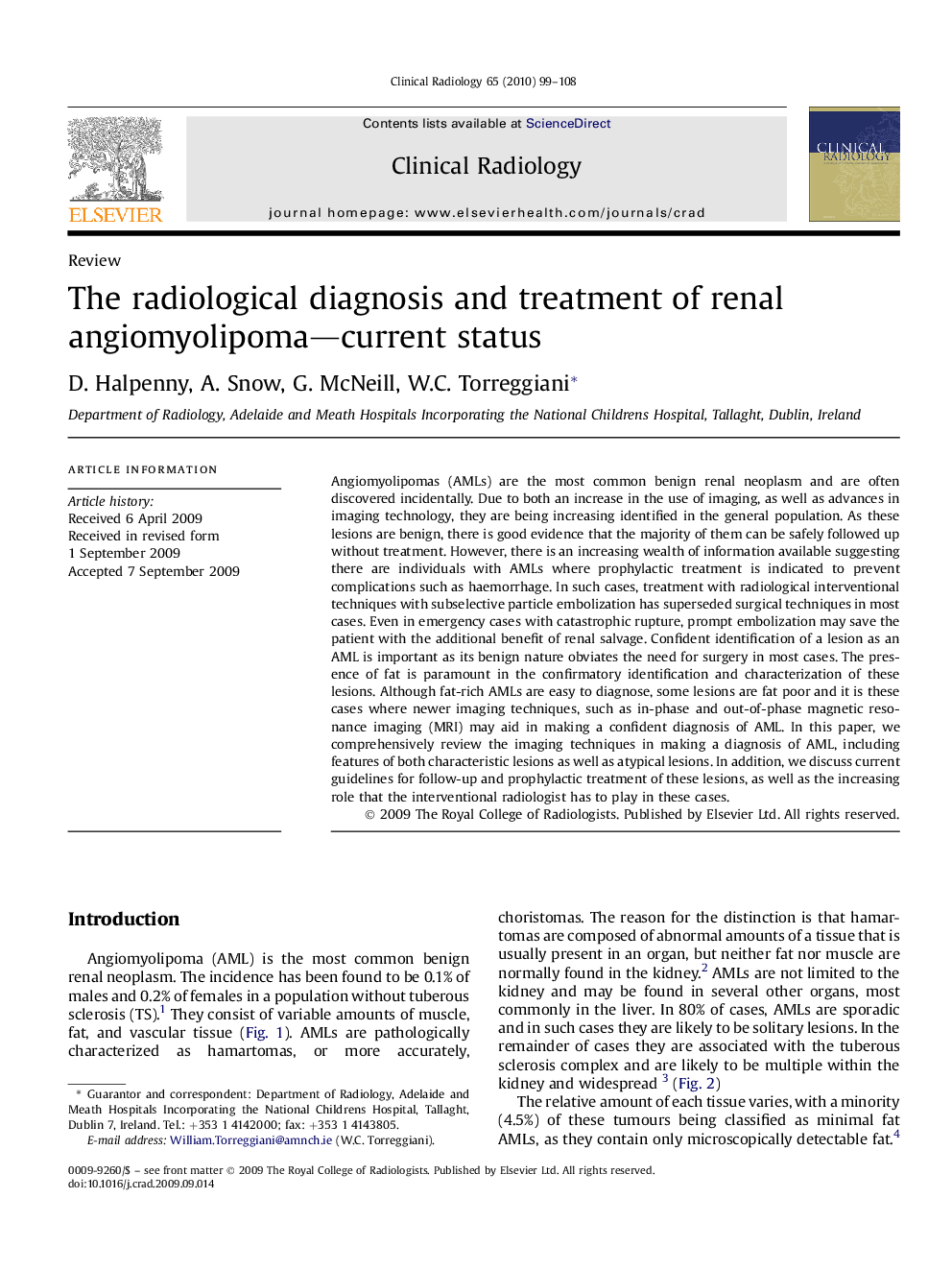| Article ID | Journal | Published Year | Pages | File Type |
|---|---|---|---|---|
| 3983714 | Clinical Radiology | 2010 | 10 Pages |
Angiomyolipomas (AMLs) are the most common benign renal neoplasm and are often discovered incidentally. Due to both an increase in the use of imaging, as well as advances in imaging technology, they are being increasing identified in the general population. As these lesions are benign, there is good evidence that the majority of them can be safely followed up without treatment. However, there is an increasing wealth of information available suggesting there are individuals with AMLs where prophylactic treatment is indicated to prevent complications such as haemorrhage. In such cases, treatment with radiological interventional techniques with subselective particle embolization has superseded surgical techniques in most cases. Even in emergency cases with catastrophic rupture, prompt embolization may save the patient with the additional benefit of renal salvage. Confident identification of a lesion as an AML is important as its benign nature obviates the need for surgery in most cases. The presence of fat is paramount in the confirmatory identification and characterization of these lesions. Although fat-rich AMLs are easy to diagnose, some lesions are fat poor and it is these cases where newer imaging techniques, such as in-phase and out-of-phase magnetic resonance imaging (MRI) may aid in making a confident diagnosis of AML. In this paper, we comprehensively review the imaging techniques in making a diagnosis of AML, including features of both characteristic lesions as well as atypical lesions. In addition, we discuss current guidelines for follow-up and prophylactic treatment of these lesions, as well as the increasing role that the interventional radiologist has to play in these cases.
